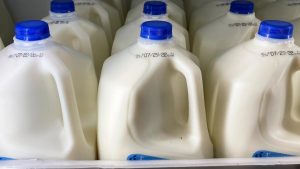
The Class III milk price has been surging for the past month. On April 15, the price was $16.53 per cwt. Four weeks later, on May 13, the price closed at $21.36. That’s an increase of $4.83 in just four weeks.
Ben Buckner, chief grains and dairy analyst for AgResource Co., says he is not surprised by the meteoric rise in the Class III milk price.
“We could all see this coming — this collision between negative production growth of milk and the swift recovery of cheese demand in the U.S.,” Buckner said during a recent Professional Dairy Producers Dairy Signal webinar.
Buckner noted that bird flu in dairy cows also may have contributed to the spike in the Class III milk price.
“Bird flu may further challenge herd growth, and we need herd growth to provide that base for future milk production expansion,” he explained.
Dairy margins improving
With the rapid increase in the Class III milk price and lower corn prices, Buckner said dairy margins are quickly improving.
“Corn prices are much, much below where they have been the last three years,” he said. “The dairy sector landscape has improved, and it improved very quickly. Not only are milk supplies tightening in the U.S., but they are tightening throughout Europe, the U.K., Australia, New Zealand and Argentina. All milk exporting countries, including the U.S., have not been able to grow milk production.”
Contracting dairy exports in other countries bodes well for U.S. milk prices, Buckner said. U.S. milk production has declined 0.5% to 1% in the last 10 consecutive months.
“USDA will be forced to lower their milk production estimate for 2024 for the sixth time this year so far,” he said. “And we haven’t seen any hints that domestic demand is slowing.” He noted that cheese demand recovered in March.
Tight milk supply to continue
Buckner predicted the milk production contraction in the U.S. will continue into July, and possibly into October or November. He attributes much of the decline to a shortage of replacement dairy heifers, due primarily to a majority of U.S. dairy farmers breeding a large portion of their dairy cows and heifers to AI beef bulls.
“Milk production in the U.S. really plateaued the last three years,” he said.
Butter disappearance is unchanged, and there is no sign of it declining anytime soon, despite a wholesale price of $2.99 per pound.
You can now read the most important #news on #eDairyNews #Whatsapp channels!!!
🇺🇸 eDairy News INGLÊS: https://whatsapp.com/channel/0029VaKsjzGDTkJyIN6hcP1K






















